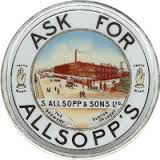1951 Here ‘ we can sit on a balcony built over the edge of the Thames and watch the barges slip down on the tide and the big ships come and go while we drink beer and sample the cooking for which this pub is famed. It’s not what you call smart and elegant, but it is old established and generally crowded.
- It has survived and now boasts of being the oldest pub in London ( est. 1520), though there are other contenders. Customers can still sit out over the Thames, though with the Docks having closed, most of the craft are tourist boats going to and from Greenwich. The food is hardly noteworthy, being mainly homely steak and ale pies, chicken pies and roasts. There are few veggie options, according to one customer, but there wouldn’t have been any in 1951!
The Eagle, City Road
- The public house, once run by the Salvation Army and immortalised in the ditty:
‘Up and down the City Road,
In and out ‘The Eagle’
That’s the way the money goes.
Pop goes the weasel’.
The pub still dispenses ‘ good cheer , excellent draught ‘Worthington’ beer, to be exact. City Road used to be the centre of the tailoring trade, and towards the end of a week the little tailors often found it necessary to put their pressing iron—or “ weasel”—into pawn with the Salvation Army publicans until pay day. You can see a “ weasel“ on show in the bar to this day.
- It’s still there, but rather more glamorous than it was in the fifties. Its website doesn’t mention its colourful past, so one must go to Know Your London for its history, which includes spells as a Music Hall, where Marie Lloyd performed. Earlier on in its life, the Eagle was mentioned by Dickens in his Sketches by Boz.
.
The George, Borough.
- Just down from London Bridge station, with its’ waterfront façade of warehouses, behind which lie rows of mean streets and little homes which suffered heavily in the Nazi blitz bombing of London’, is the Borough. On the left going southwards can be found a ‘historic gem’ of an inn, the George, once ‘a terminus for stage coaches’. As we enter the coachyard we really do jump back a century. It’s not mere a question of the setting …Who is this Sam Wellerish figure, a real ostler ? And bless my heart, there’s Mr Pickwick himself about to take coach to Dingley Dell. All right, it’s no hallucination. We just happen to have arrived when the admirers of Charles Dickens use the coachyard as a stage to act scenes from his works ‘


